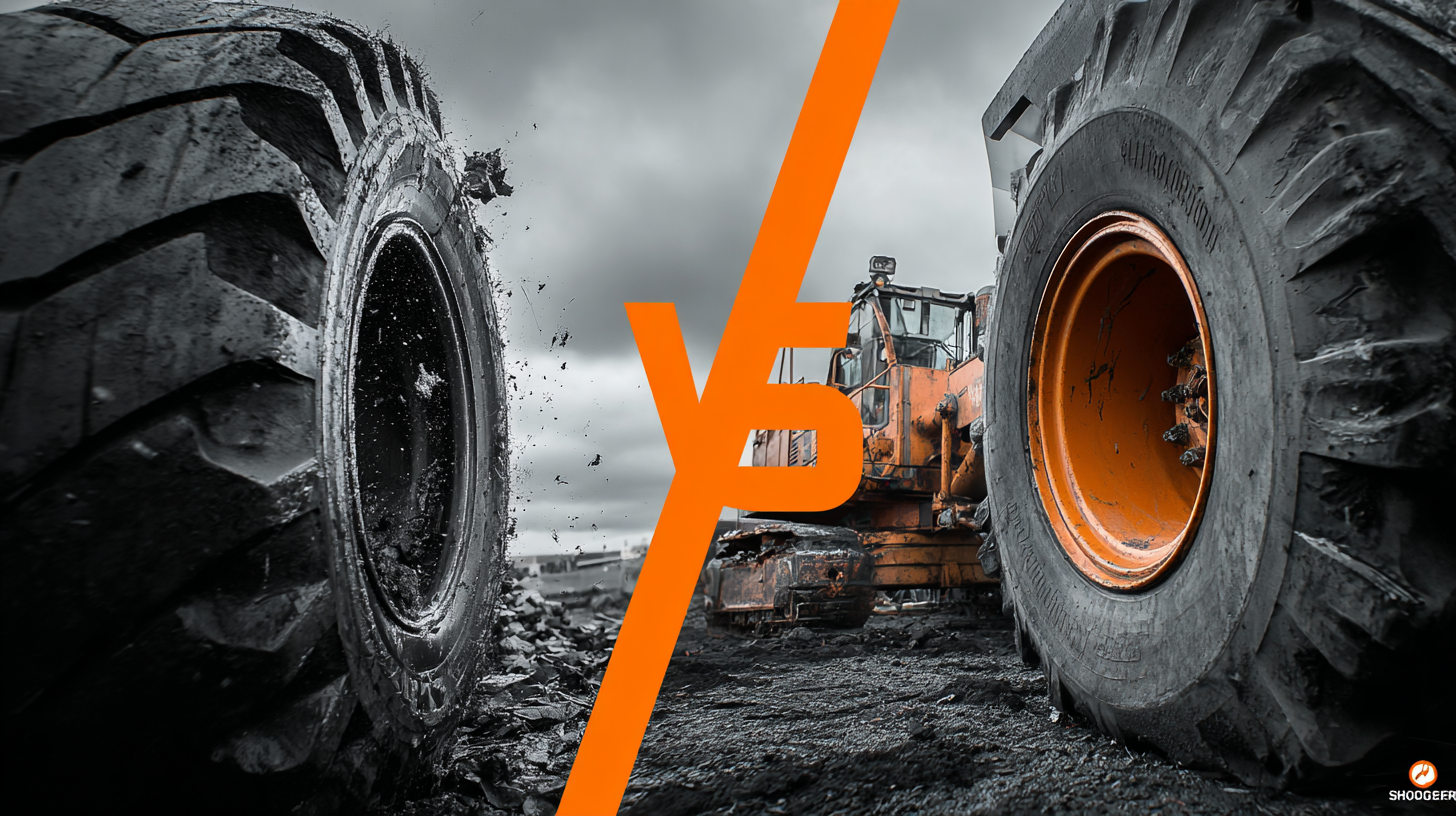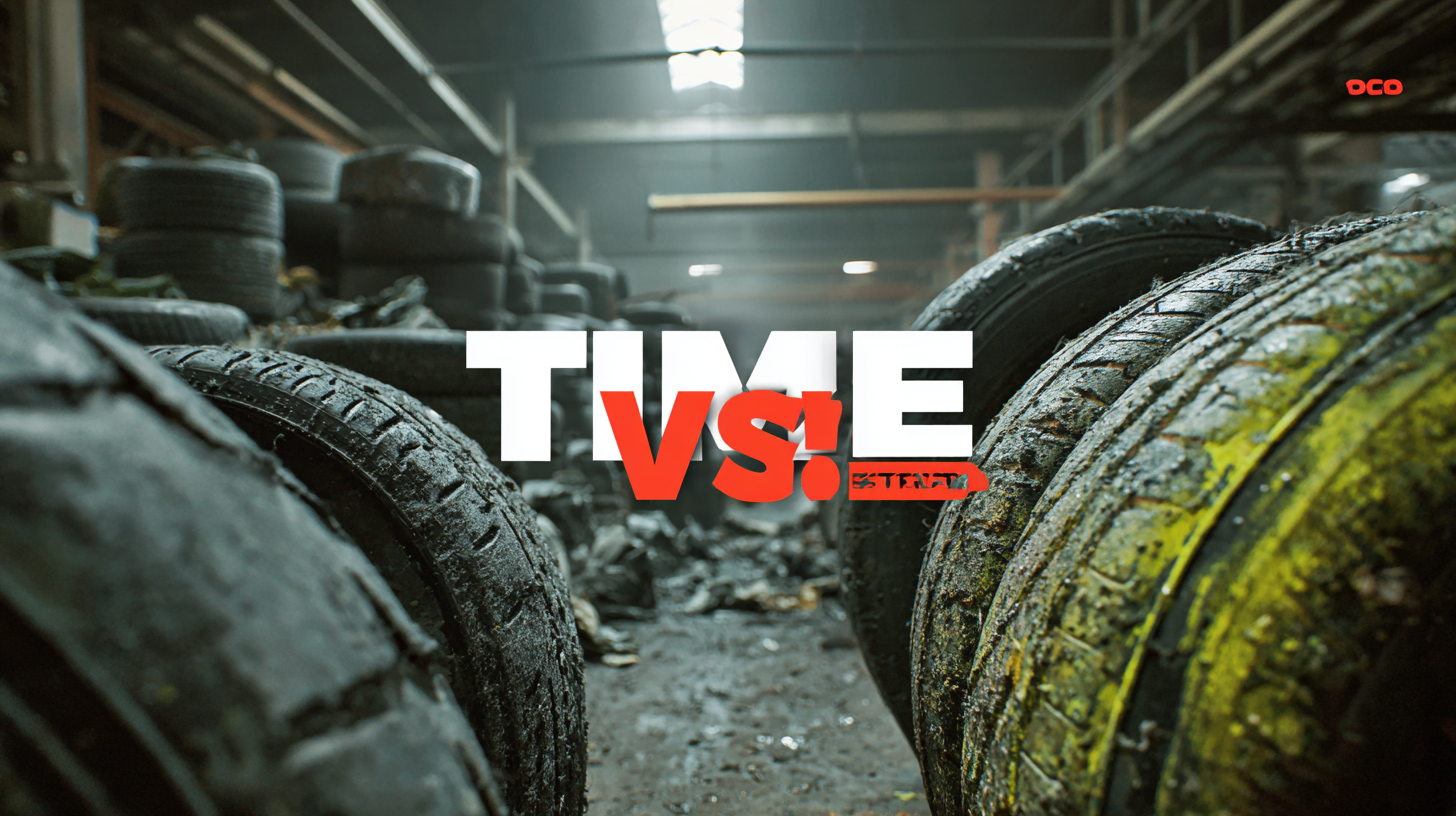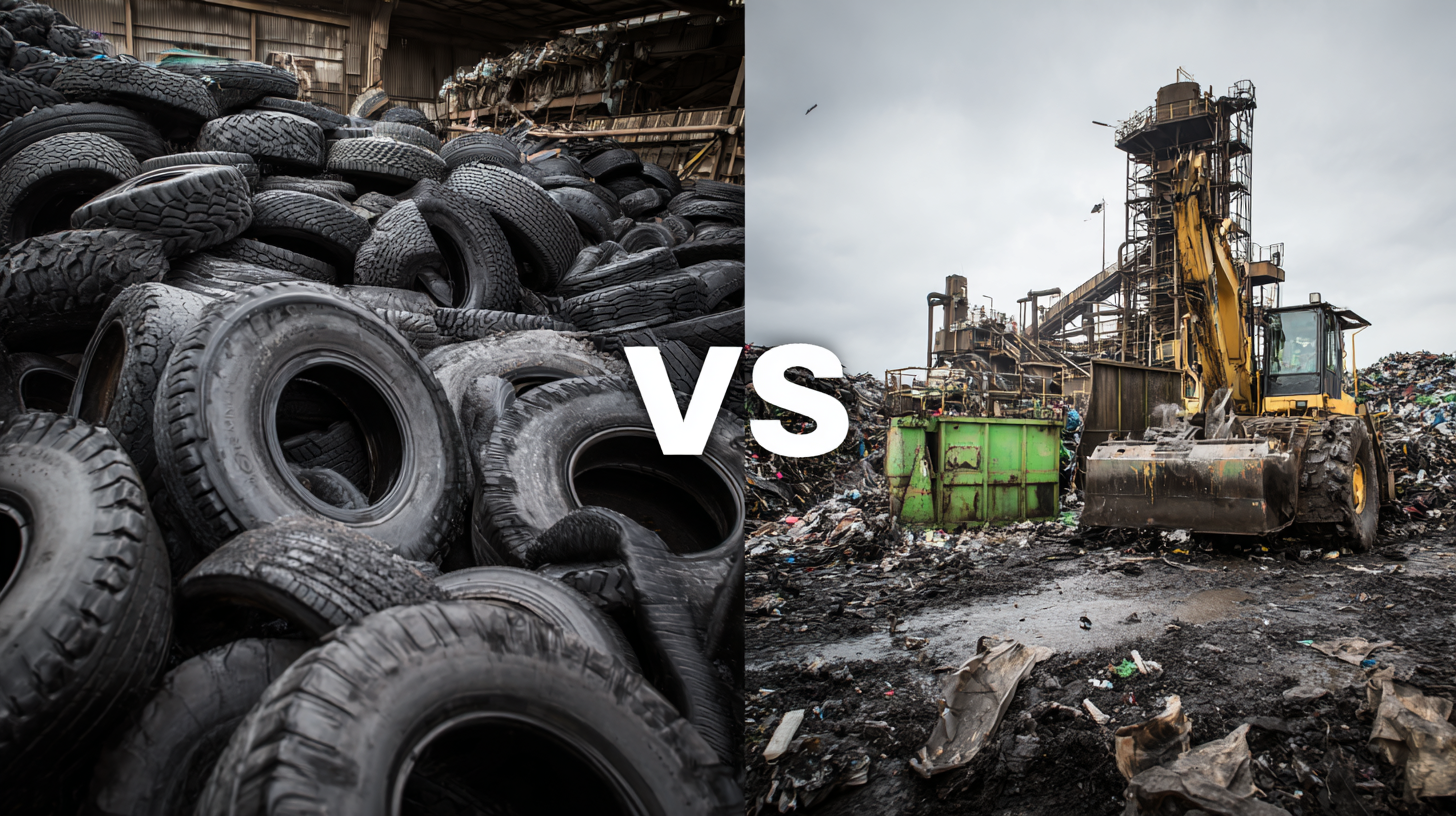In recent years, the demand for effective waste management solutions has rapidly increased, particularly in the recycling sector, where Rubber Tire Shredders play a critical role. According to a comprehensive market analysis report, the global rubber recycling market is projected to reach $6.5 billion by 2025, with tire shredding technology being a key driver of this growth. As the automotive industry continues to expand, the volume of end-of-life tires is surging, thereby necessitating efficient shredding processes. Rubber Tire Shredders not only facilitate the conversion of waste tires into reusable materials, but they also significantly contribute to environmental sustainability by reducing landfill usage and conserving natural resources. In this blog, we will delve into the leading contenders in the market, examining their features, capabilities, and overall effectiveness in tackling the increasing demand for reliable rubber tire processing solutions.

When evaluating rubber tire shredders, understanding their technical specifications is crucial for making an informed decision. Key features such as motor power, cutting capacity, and blade design significantly influence a shredder's efficiency and effectiveness. A higher motor power enables the machine to process larger volumes of tires in less time, while specific blade configurations can enhance cutting precision and durability.
Tip: Always consider the maintainability of the machine. Look for models with easily accessible parts for maintenance and repair, as this can save time and reduce operational costs in the long run.
Another vital aspect to consider is the shredder's output size. Different applications may require specific granule sizes; therefore, it's essential to choose a shredder that allows for adjustable output settings. This flexibility can greatly expand the utility of the machine in various recycling processes.
Tip: Before making a purchase, assess the availability of replacement parts and technical support from the manufacturer. Ensuring you can easily obtain parts will minimize downtime and keep your operations running smoothly.

When it comes to rubber tire shredders, power output and efficiency are critical factors that dictate a model's performance. Leading manufacturers have been locked in a competitive race to design shredders that not only deliver robust power but also maximize efficiency in processing tires. For instance, some models are equipped with advanced motor technology that enhances torque, allowing them to handle heavy rubber without compromising speed. These technical advancements ensure that operators can expect higher throughput rates, effectively minimizing downtime between cycles.

Efficiency in tire shredding is equally important, as it directly impacts operational costs. Models that incorporate optimized cutting systems are becoming increasingly popular, as they reduce energy consumption while maintaining performance levels. The latest shredders utilize smart technology that monitors the shredding process, adjusting power output according to the material being processed. This ensures a more efficient operation overall, allowing businesses to save on energy bills and increase their profitability. Evaluating these key performance indicators is essential for anyone looking to invest in the best rubber tire shredder for their needs.
When it comes to rubber tire shredding, the durability of the blades is paramount. The composition of the shredding blades directly impacts their longevity and efficiency. High-quality materials such as hardened steel or carbide-tipped blades are often used in premium rubber tire shredders. These materials not only provide superior strength but also resist wear over time, ensuring that the shredders maintain their performance amidst heavy-duty use.
Moreover, the design of the blades plays a critical role in their effectiveness. Blades that feature a unique geometry can maximize the cutting action, reducing the strain on the material. This not only prolongs the life of the blades but also enhances the overall shredding process, resulting in cleaner cuts and finer rubber particles. Operators should consider not only the blade material but also the manufacturing process, as precision engineering can significantly improve blade durability and efficiency. By understanding these factors, businesses can make informed decisions when selecting a rubber tire shredder that meets their operational needs.
In the industrial tire shredding sector, noise pollution is a significant concern not only for the workers but also for the surrounding communities. Recent studies indicate that traditional tire shredders can produce sound levels exceeding 100 dB, making it essential for manufacturers to implement effective noise reduction technologies. By utilizing sound-absorbing materials and advanced vibration-damping techniques, modern shredders can achieve noise levels as low as 85 dB, which is more in line with occupational safety standards.
One particularly promising advancement is the integration of electric drive systems in tire shredders. According to a report from the Environmental Protection Agency (EPA), electric shredders can reduce operational noise by up to 50% compared to their diesel counterparts. Additionally, incorporating hydraulic systems with variable speed controls allows operators to adjust the shredding intensity without full power, further minimizing sound output while maintaining efficiency. As industries strive for sustainability alongside compliance with noise regulations, investing in these innovative technologies is becoming increasingly essential.
Navigating the world of tire shredders requires an understanding of the intricate safety standards and compliance regulations that govern the industry. Compliance with the Environmental Protection Agency (EPA) guidelines is essential, as improper tire disposal can have serious environmental impacts. According to a report by the Tire Industry Association (TIA), approximately 290 million tires are discarded annually in the United States alone, emphasizing the need for efficient shredding processes that adhere to legal specifications. This is vital not only for environmental protection but also for ensuring user safety in the shredding process.
When selecting a rubber tire shredder, always verify that the equipment meets OSHA standards, particularly concerning noise levels and machine safety features. Incorporating low-decibel shredders can significantly reduce workplace noise pollution, contributing to a safer working environment. Additionally, consider choosing machines with automatic shut-off mechanisms and guards to prevent accidents during operation.
**Tip:** Regular training and safety drills for operators can enhance compliance and ensure that all team members understand the potential hazards associated with tire shredding. By prioritizing safety and compliance, businesses can not only protect the environment but also create a more efficient and secure working atmosphere.
